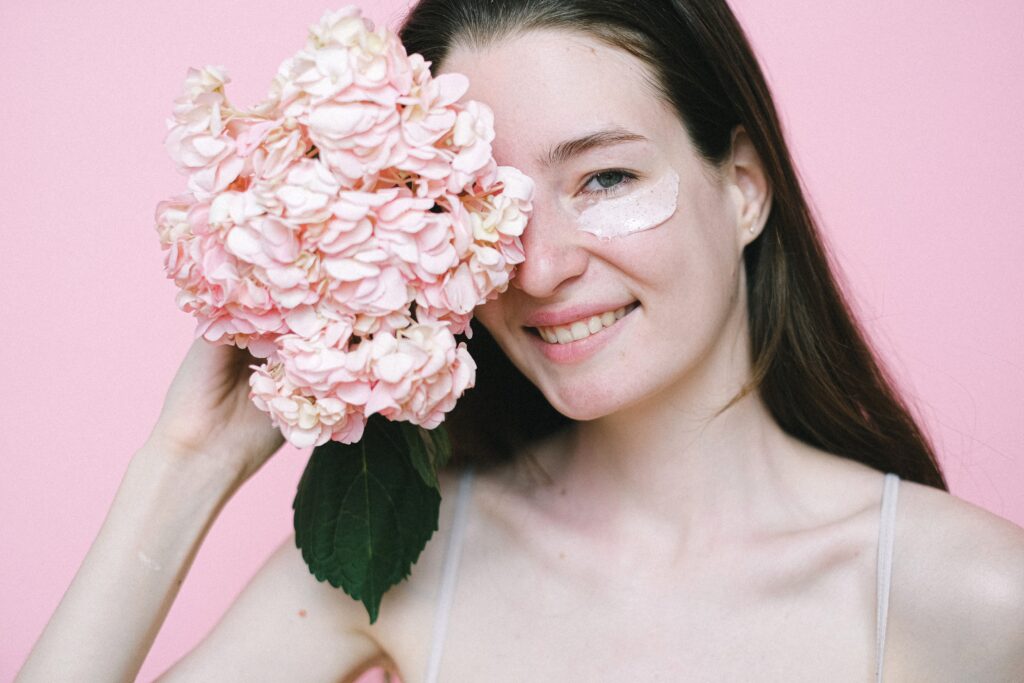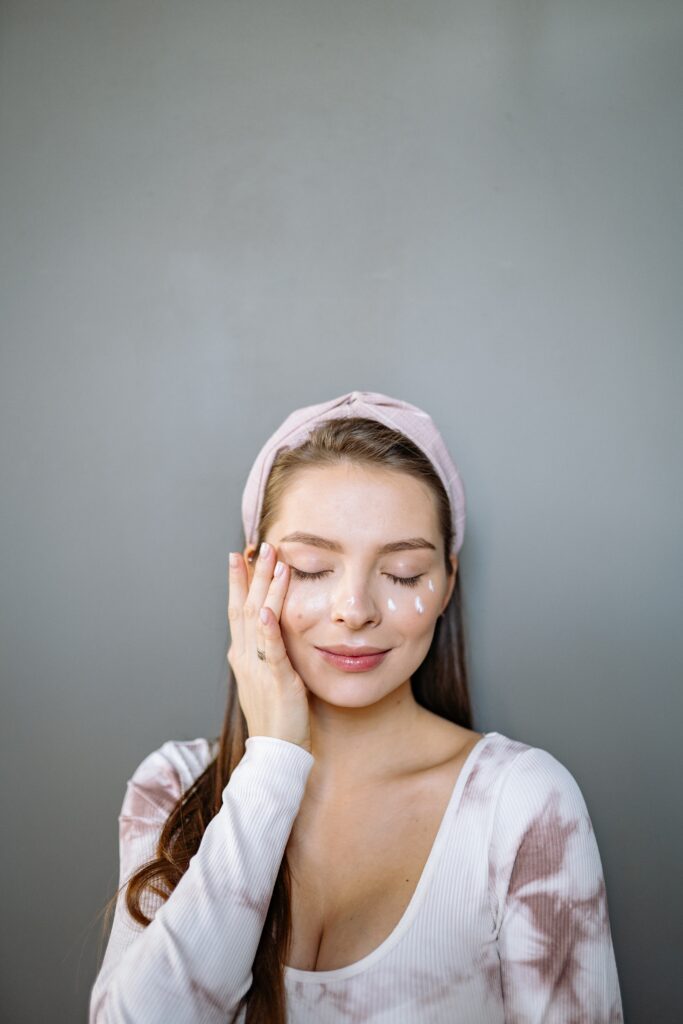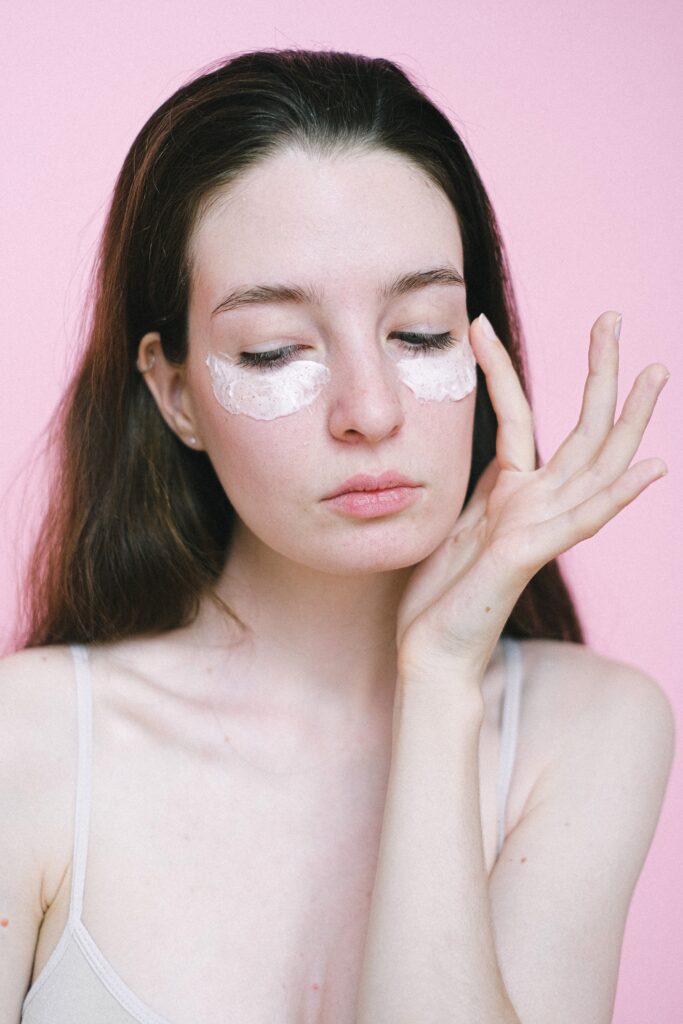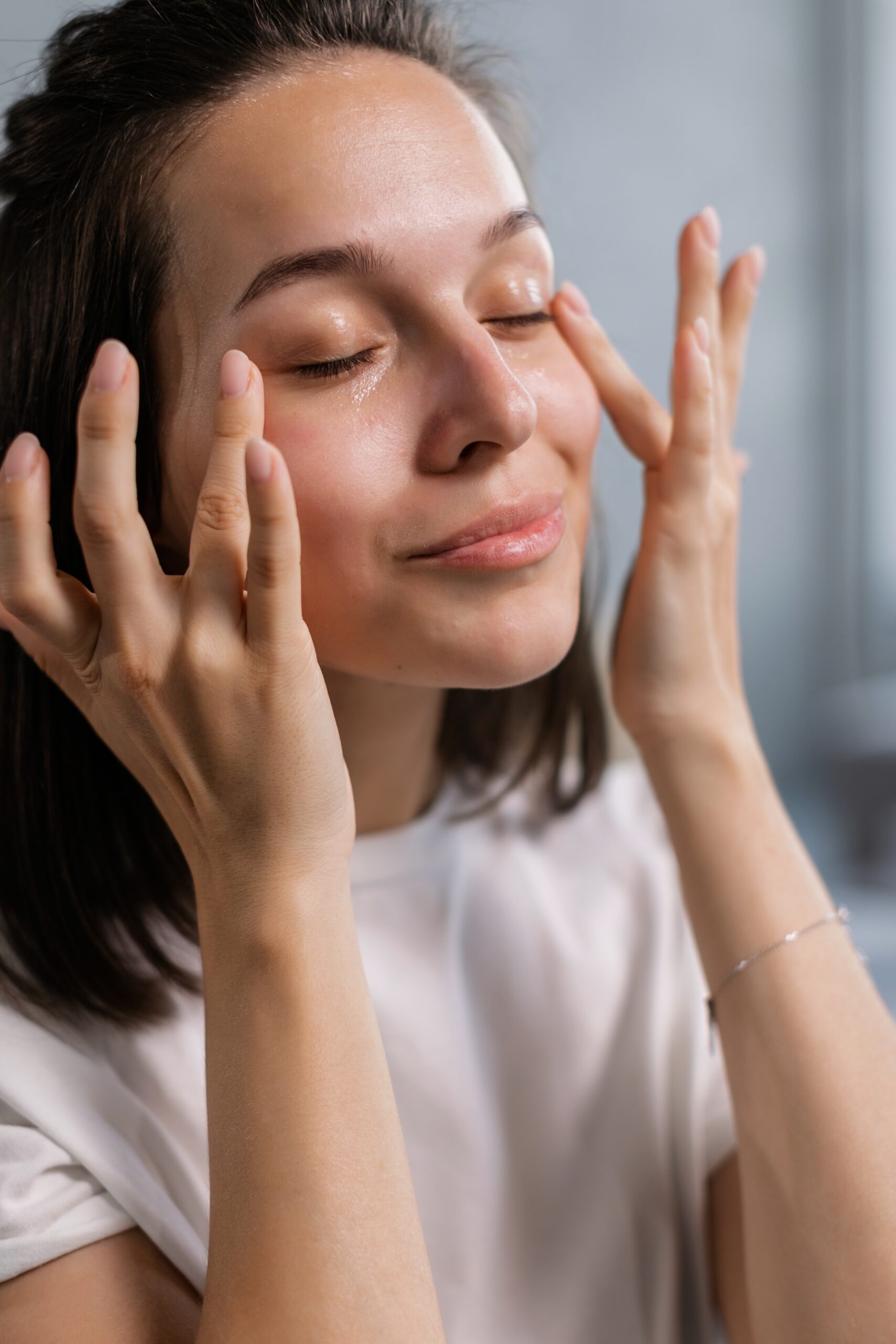Note: As an affiliate, I earn a small commission from qualifying purchases made through links in this post. This helps support my work, but it won't cost you any extra. For more information, please read my full disclosure here.
This blog will answer the question, ‘Does eye cream actually work?’ and provide you with all the information you need to know about eye cream!
Okay, so we’re here to talk about something that might seem a bit weird: eye cream. You know, that small jar of fancy stuff that can cost a lot of money.
Some people think it’s a waste of cash. They say, “Why bother with eye cream when regular face cream can do the same job?”
But others swear by it, thinking it’s a smart choice for their skin’s future. So, in this blog, we’re going to explore eye cream. We’ll find out what it is and, most importantly, whether it’s really worth your money or just a gimmick.
What Is Eye Cream?

What exactly is this eye cream? It’s a special kind of cream made just for the skin around your eyes. You know, that delicate area where you might have some issues like dark circles, those tiny lines, or puffiness. Eye cream is like a superhero designed to tackle these specific problems. It’s not your regular face cream, but a focused solution for your eye area.
What Are the Ingredients in an Eye Cream?
Let’s talk about what goes into an eye cream. Eye creams are like secret recipes with carefully chosen ingredients to tackle different eye concerns. Here’s a list of some common ingredients you might find in them:
- Glycerin: This helps to keep your skin moisturized and soft.
- Caffeine: It can reduce puffiness by tightening up the tiny blood vessels around your eyes.
- Hyaluronic acid: This ingredient helps to keep your skin hydrated and looking plump.
- Vitamin C: It’s an antioxidant that can boost collagen and make your blood vessels stronger. This can help reduce puffiness.
- Vitamin A (Retinol): It can help your skin cells turn over faster and rebuild collagen. Great for tackling dark circles.
- Vitamin E: This can calm down any inflammation.
- Niacinamide: It’s good for overall skin health.
And when it comes to different eye creams, they often have one main ingredient that’s super effective for a specific problem:
- Dark circles: For those pesky dark circles, look for eye creams with ceramides to keep your skin hydrated and strong. Ingredients like lactic acid or malic acid can gently exfoliate the surface and lighten the pigmentation. Plus, vitamin C is another hero here, as it boosts collagen and strengthens those blood vessels, reducing puffiness. Vitamin E helps with inflammation, and retinol can work wonders for dark circles.
- Fine lines: When it’s all about fine lines, you want eye creams with ceramides to rebuild your skin’s barrier and peptides to plump up your skin. Retinol is also a star player here, as it stimulates cell turnover.
- Puffiness: Puffiness can be caused by lifestyle stuff like too much salty food, not enough sleep, or even allergies and sinus issues. In this case, go for eye creams with caffeine. Why? Because caffeine can shrink those blood vessels and reduce the buildup of fluid that causes puffiness.
Does Eye Cream Actually Work?

Does eye cream actually do the job? The short answer is yes, but there’s a little more to it.
Eye cream can be effective because it’s formulated with ingredients that are just right for the skin around your eyes. Remember those ingredients we talked about earlier, like caffeine, vitamins, and hydrating elements? They’re carefully chosen to target issues like dark circles, puffiness, and fine lines.
But here’s the catch – you need to be patient. Eye cream isn’t a magic wand that instantly erases all your eye concerns. It takes some time for these special ingredients to work their magic and show visible results.
So, yes, eye cream can work, but you’ll need a bit of patience to see those changes in the mirror.
How Long Does It Take to See Results from Eye Creams?
Dermatologists tell us that it takes around 30 days for our skin cells to complete their natural turnover process. This is a big reason why you might not see instant results when you start using any skincare products (eye cream included). Your skin needs time to do its thing.
Before you give up on an eye cream because you haven’t seen immediate changes, consider this: consistency is key. You might just need to stick with it for a while. Most eye creams are formulated to provide noticeable results within an average of 8 to 12 weeks.
It’s a bit like going to the gym. You don’t expect to see muscles right after one workout, right? It’s about long-term commitment and consistent effort. So, give your eye cream a fair chance to work its magic over time.
Is an Eye Cream Really Better Than a Moisturizer?

You might be wondering if you can simply use your regular moisturizer instead of investing in a separate eye cream. It’s a valid question, so let’s break it down.
The thing is, eye cream exists for a reason. The skin around your eyes is different from the rest of your face. It’s thinner and more delicate, which makes it more prone to showing signs of aging earlier than other areas. Because of this, it needs some special attention.
Your regular moisturizer might not provide enough moisture for your eye area. On the flip side, face creams can sometimes contain powerful ingredients like high doses of retinol or exfoliating acids. While these can be great for your face, they might be too harsh for the sensitive skin around your eyes.
If you’re serious about keeping your skin youthful and healthy, investing in a dedicated eye cream is a wise move for the long run.
What Age Should You Start Using Eye Cream?
According to dermatology experts, it’s a good idea to begin using an eye cream when you’re in your twenties to mid-twenties (20-25).
Why so early? Because the skin around your eyes is pretty delicate, and it tends to be the first place where signs of aging, like those sneaky fine lines and wrinkles, start to show up.
Think of it as a preventive measure, like wearing sunscreen to protect your skin from the sun’s harmful rays. By starting early, you’re giving your skin a head start in the battle against aging. So, even if you’re not battling crow’s feet just yet, using an eye cream as part of your routine can be a smart move for the long haul.
Is It Better to Put Eye Cream on Wet or Dry Skin?
When you put eye cream on skin that’s still a little wet or damp, it can work even better because it helps lock in that much-needed moisture, keeping your skin soft and hydrated.
Before you apply your eye cream, take a cold, damp cloth and gently dab the skin under your eyes. This adds a bit of extra moisture to your skin and can make your eye cream even more effective.
Which Apply First: Eye Cream or Moisturizer?

Start by using your face moisturizer first. Get your face all nice and hydrated. Remember, we mentioned that it’s a good idea to apply your eye cream on slightly damp skin? Well, your moisturizer helps with that by giving your skin that initial boost of moisture.
In your daily skincare routine, the under-eye cream usually comes after your face moisturizer. It’s like giving your delicate eye area a little extra love once your skin is all prepped and hydrated.
The only thing that should come after your eye cream, especially if it’s the morning, is sunscreen. Sun protection is crucial to keep your skin looking young and healthy.
Is It Ok to Use Vaseline as Eye Cream?
Vaseline is indeed a safe moisture barrier, and it can be quite handy for various minor dry skin issues, including your eyelids. It helps to lock in moisture and prevent water loss from your skin, which can be especially useful in dry climates or during harsh weather.
However, here’s the important part: do not put Vaseline directly into your eyes. It’s meant for the skin around your eyes, not for the inside. That’s a big no-no.
While it’s inexpensive and can provide some short-term relief, it may not be the best long-term solution. Why? Because it’s very thick and can potentially clog the tiny pores around your eyes. This might lead to issues like milia (small, hard, white bumps) or other skin irritations.
So, while Vaseline can offer a quick fix for dry skin, especially in a pinch, it’s not the ideal substitute for a dedicated eye cream in the long run.
Wrapping It Up
In our exploration of eye cream tailored for the delicate skin around the eye, we’ve uncovered its potential. This specialized potion, enriched with ingredients like caffeine and vitamins, aims to combat concerns like dark circles and puffiness.
However, patience is key. It’s a 30-day journey for skin cells to renew, and it can take 8 to 12 weeks to see improvements in collagen production and diminishing fine lines.
While some ponder using regular moisturizer, remember the eye area demands special care. Starting an eye cream regimen in your twenties can preemptively address aging signs.
Applying eye cream to slightly damp skin enhances its efficacy in keeping delicate skin soft and hydrated. In your routine, moisturizer precedes eye cream, followed by sunscreen for daytime protection.
More About Skincare Topic:
The Truth About Retinol Side Effects: What You Need To Know
Face Oil Vs. Moisturizer: Which One Is Better For Your Skin?





